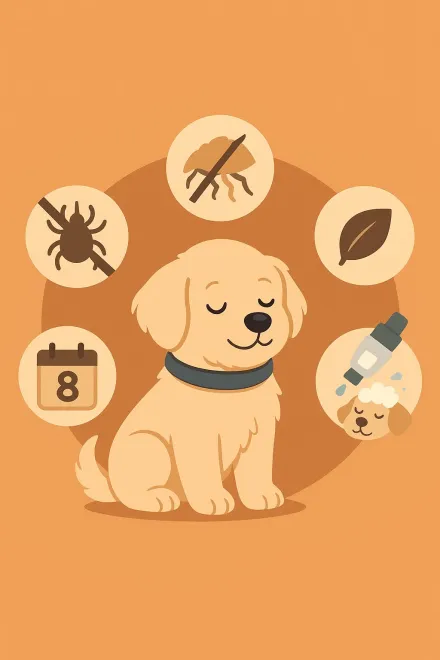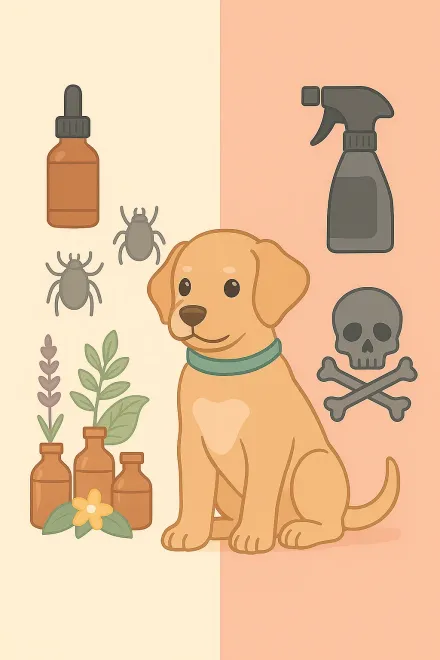Puppy Flea and Tick Collars
Protecting your puppy from parasites is crucial for their health and well-being. Puppy flea and tick collars are specially formulated to provide effective and safe protection from an early age, minimizing the risk of infestation by fleas, ticks, and other external parasites.
In this guide, we'll explain which collars are suitable for puppies, how to choose the best one, what ingredients to avoid, and what alternatives exist if your puppy isn't old enough yet for a collar.
See puppy flea and tick collars on Amazon
When can a puppy start using a flea and tick collar?
Most manufacturers recommend waiting until the puppy is at least 7 or 8 weeks old before using a flea and tick collar. Before this age, their immune system is more vulnerable and their skin more sensitive, so it's preferable to choose alternative methods under veterinary supervision.
Some puppy-specific collars are formulated to be gentle and safe from 6 weeks old, but it is crucial to always read the manufacturer's instructions and consult your veterinarian first.
What are the benefits of flea and tick collars for puppies?
Flea and tick collars designed for puppies provide continuous protection against various parasites that can severely affect their health. Main advantages include:
- Early prevention of fleas and ticks: prevents infestations that can lead to anemia, allergies, or infectious diseases.
- Formulas adapted for sensitive skin: active ingredients are included in milder and safer doses.
- Long-lasting protection: some collars provide up to 8 months of repellency.
- Complementary use: can be combined with mild baths or topical treatments if approved by your veterinarian.
Starting protection early creates a preventative routine that benefits your puppy throughout its life.


Safe ingredients and ingredients to avoid for puppies
Not all antiparasitic ingredients are suitable for puppies. Some active ingredients used in adult dog collars may be too aggressive or even toxic for younger dogs.
The safest ingredients include:
- Imidacloprid: used in low doses, effective against fleas without irritating the skin. Often found in Seresto collars.
- Flumethrin: repels and kills ticks with good tolerance in puppies older than 7 weeks, also present in Seresto collars.
- Natural essential oils (lavender, citronella, neem): provide gentle, albeit less potent, protection.
On the contrary, ingredients such as permethrin or amitraz may be too strong for puppies. Always check the label carefully before purchase.
Frequently Asked Questions about Puppy Flea and Tick Collars
At what age can puppies start using flea and tick collars?
Typically around 7-8 weeks old. Some collars can be used from 6 weeks, but always read the label and consult your veterinarian.
Are natural ingredient collars safe for puppies?
Yes, if specifically formulated for puppies. Natural ingredient collars with lavender or neem are safe, but always check the ingredients list carefully.
What should I do if my puppy reacts badly to the collar?
Immediately remove the collar, rinse the area with water, and seek veterinary advice promptly.
Can I combine a flea collar with a spot-on treatment?
Sometimes, but only with veterinary approval, as mixing treatments can increase adverse reactions.
Can I cut an adult collar to fit my puppy?
No. The concentration of active ingredients remains the same and might be too strong for a puppy. Always choose collars formulated specifically for puppies.
